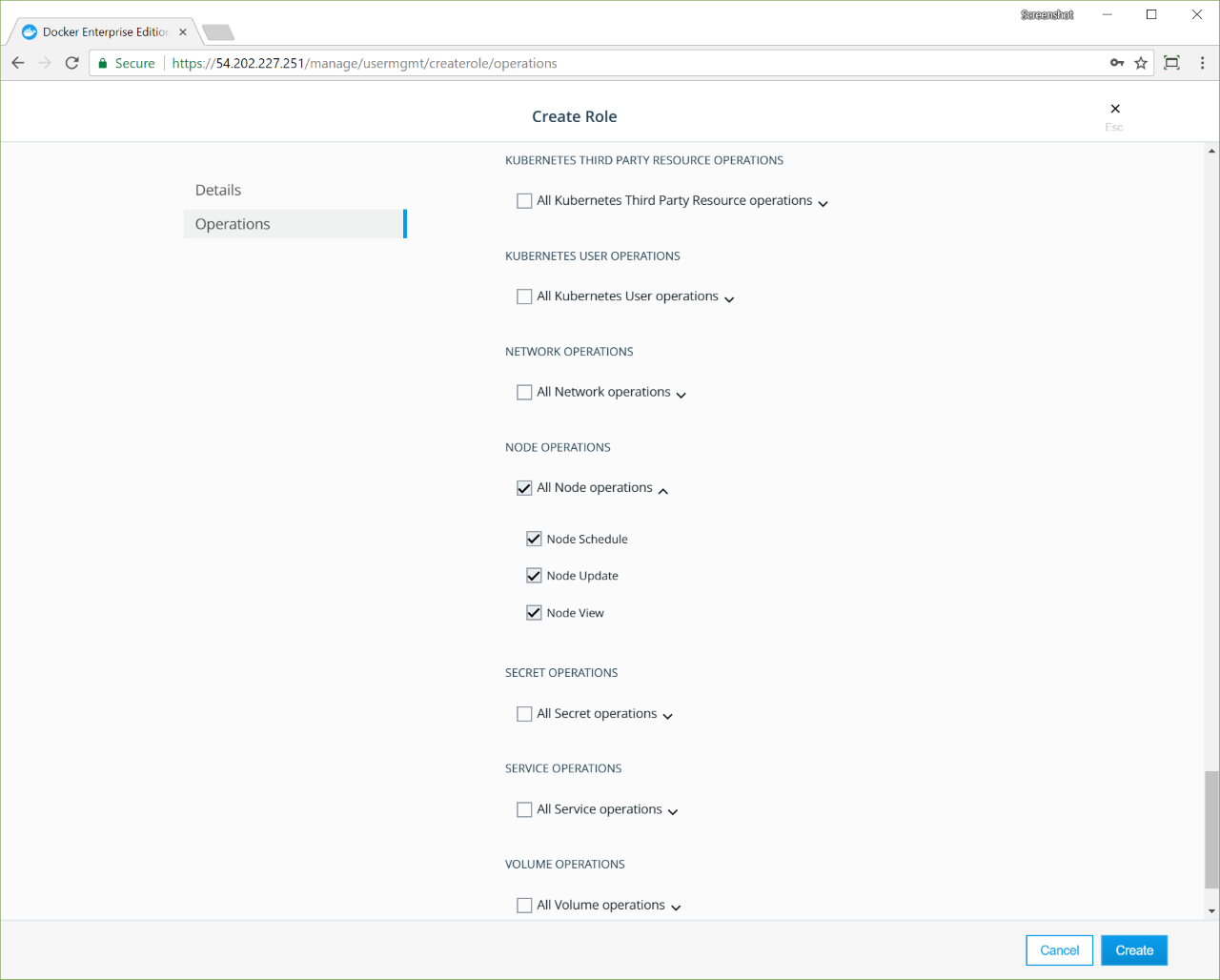Define roles with authorized API operations
Estimated reading time: 2 minutesA role defines a set of API operations permitted against a resource set. You apply roles to users and teams by creating grants.
Default roles
You can define custom roles or use the following built-in roles:
| Built-in role | Description |
|---|---|
None |
Users have no access to Swarm or Kubernetes resources. Maps to No Access role in UCP 2.1.x. |
View Only |
Users can view resources but can’t create them. |
Restricted Control |
Users can view and edit resources but can’t run a service or container in a way that affects the node where it’s running. Users cannot mount a node directory, exec into containers, or run containers in privileged mode or with additional kernel capabilities. |
Scheduler |
Users can view nodes (worker and manager) and schedule (not view) workloads on these nodes. By default, all users are granted the Scheduler role against the /Shared collection. (To view workloads, users need permissions such as Container View). |
Full Control |
Users can view and edit all granted resources. They can create containers without any restriction, but can’t see the containers of other users. |
Create a custom role for Swarm
When creating custom roles to use with Swarm, the Roles page lists all default and custom roles applicable in the organization. To create custom roles for Kubernetes, see Configure native Kubernetes role-based access control.
You can give a role a global name, such as “Remove Images”, which might enable the Remove and Force Remove operations for images. You can apply a role with the same name to different resource sets.
- Click Roles under User Management.
- Click Create Role.
- Input the role name on the Details page.
- Click Operations. All available API operations are displayed.
- Select the permitted operations per resource type.
- Click Create.

Some important rules regarding roles:
- Roles are always enabled.
- Roles can’t be edited. To edit a role, you must delete and recreate it.
- Roles used within a grant can be deleted only after first deleting the grant.
- Only administrators can create and delete roles.
Where to go next
- Create and configure users and teams
- Group and isolate cluster resources
- Grant role-access to cluster resources
